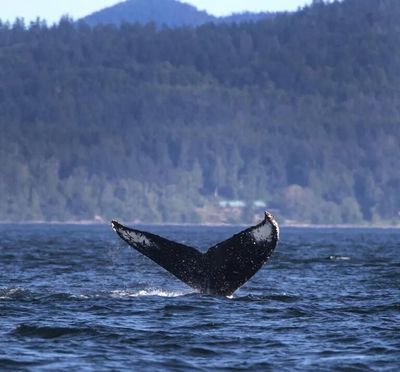Judge: Feds failed to protect endangered humpbacks from fishing gear

A federal court ruled Tuesday that the National Oceanic and Atmospheric Administration failed to uphold its mandate to protect endangered and threatened humpback whales along the West Coast in one fishery.
In the lawsuit filed last year, the Center for Biological Diversity alleged the agency failed to establish a plan to protect the whales from deadly entanglements in sablefish pot gear. In a December 2021 permit, NOAA authorized “the incidental, but not intentional” take, or catch, of listed or protected marine mammal species in the Washington, Oregon and California sablefish pot fishery.
U.S. District Judge James Donato found the NOAA Fisheries’ permit without a plan to reduce harm to the species violated the Marine Mammal Protection Act. The agency is required to show proof that a take-reduction plan has been developed or is in the works.
The ruling should encourage the federal agency to develop measures to reduce harm to humpback whales in the sablefish fishery.
Sablefish, also known as black cod, live up and down the West Coast in depths surpassing 3,000 feet. To catch them, fishers drop pots on the ocean floor and run a line to buoys on the water’s surface.
Those ropes can get caught on animals’ mouths, fins or tails, cutting into their flesh as they’re dragged down by traps. Whales can get stuck, leaving them to slowly starve or drown if not rescued.
Humpbacks have been the most common whale species to become entangled in fishing gear, making up more than 60% of the nearly 30 entanglements confirmed in 2021, according to NOAA.
“We’re hoping that this can help not only humpback whales off our coasts,” said Kristen Monsell, senior attorney for the Center for Biological Diversity, “but marine mammals that are entangled in other fishing gear elsewhere.”
The Center for Biological Diversity is hoping the ruling would encourage the use of new “ropeless” fishing methods, like bags that inflate and bring the trap to the surface.
“No one in the fishery wants to catch whales,” said Glen Spain, director of the Pacific Coast Federation of Fishermen’s Associations. “And nobody wants to hurt them in any way.”
Spain said he’s worried much of the ropeless gear is still too expensive and fragile for widespread use. But linkage breaks, which allow the rope to separate if an animal becomes entangled, are already in use.
Both the Central America and Mexico populations of humpbacks are listed as endangered or threatened under the Endangered Species Act.
The Central America population breeds along the Pacific coast of Central America and feeds off the West Coast of the U.S. The Mexico population breeds along the Pacific coast of Mexico and feeds across a broad swath of the West Coast, from California to Alaska’s Aleutian Islands.
The massive creatures have one of the longest migrations of any mammal. They use their baleen plates – big bristles made of keratin – to suck in massive amounts of saltwater, filtering in krill and small fish to eat.